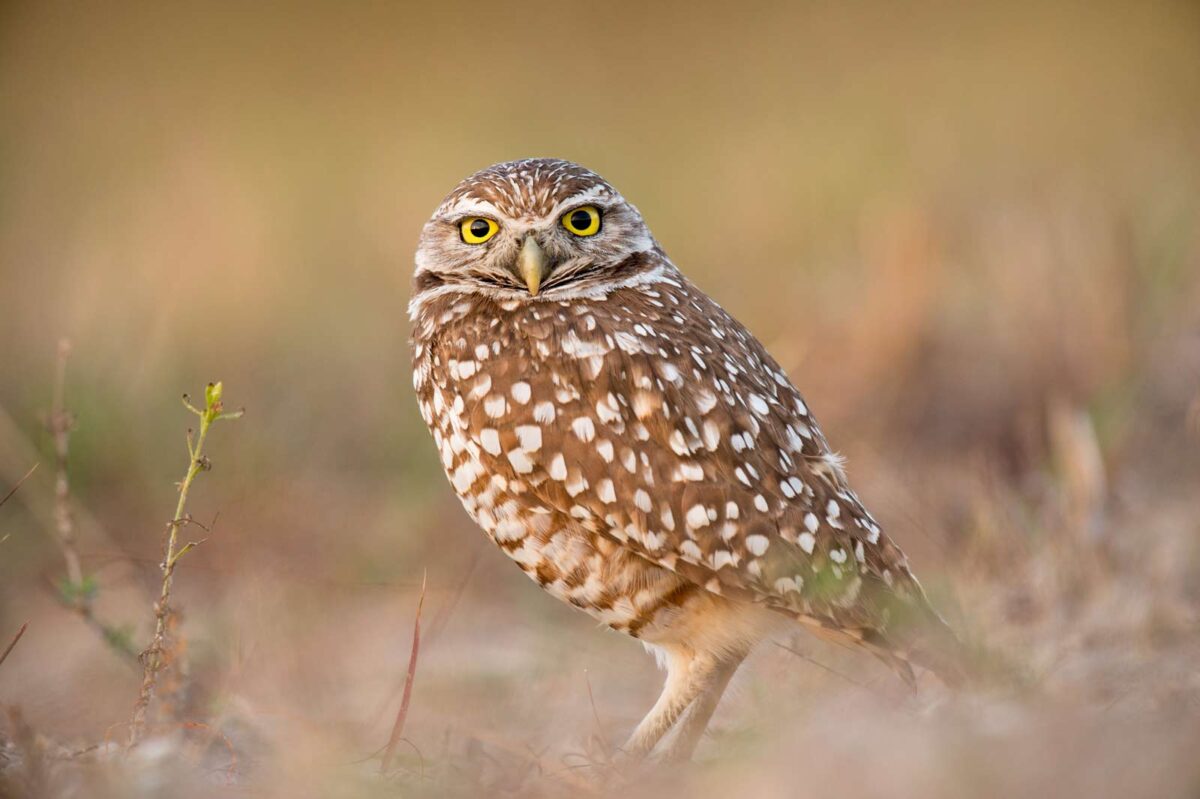BURROWING OWL
Athene cunicularia

Status: CA State Species of Special Concern
Recovery Permit Required for Surveys? No
Range: Much of the western United States, Mexico, and Florida
Link: USFWS Survey Guidelines
Burrowing owls are small, dirunal (active during the day) birds. They are sandy colored with bright-yellow eyes. While they live underground in burrows they’ve dug themselves or taken over from a prairie dog, ground squirrel, or tortoise, they typically stand guard during the day, watching the world around them. They live in grasslands, deserts, and other open habitats, where they hunt mainly insects and rodents.
SummitWest employees have a combined 10 years of experience monitoring for and conducting presence/absence surveys for burrowing owls, and have experience collapsing burrows after removal at construction sites.
SUITABLE HABITAT
Burrowing owl habitat can be found in many diverse areas, including degraded and open fields that look as though they may not be conducive to a sensitive species. Burrowing owls can live in both natural and man-made burrows, including old PVC pipes and ground squirrel mounds and burrows. They can be found in a range of habitats, including abandoned ag fields, open fields, annual and perennial grasslands, deserts, and scrublands characterized by low-growing vegetation (Zarn 1974). While suitable owl habitat may also include trees and shrubs if the canopy covers less than 30 percent of the ground surface, but typically in California we see them nesting in burrows on the ground.
According to the Cornell Ornithology Lab, “Burrowing Owls eat invertebrates and small vertebrates, including lizards, birds, and mammals. Invertebrates, especially insects, constitute the majority of food items, while vertebrates make up the bulk of the diet by mass. Burrowing Owls commonly hunt grasshoppers, crickets, moths, beetles, mice, voles, and shrews. They also prey on dragonflies, giant water bugs, earwigs, caterpillars, scorpions, and earthworms, frogs, toads, snakes, lizards, turtles, and salamanders, bats, ground squirrels, small weasels, young rabbits, songbirds, waterbirds, baby ducks, and even young burrowing owls. Females catch more insects, mostly during the day; males take most of the vertebrates, mostly at night (Cornell Lab of Ornithology)”
SURVEY SEASON & GUIDELINES
Per the USFWS burrowing owl survey guidelines, a complete burrowing owl survey consists of four site visits, and the nesting season begins as early as February 1 and continues through August 31. The timing of nesting activities may vary with latitude and climatic conditions. If possible, the nesting season survey should be conducted during the peak of the breeding season, between April 15 and July 15. The first site visit will be to examine burrows for owl sign and map the locations of occupied burrows. Subsequent observations should be conducted from as many fixed points as necessary to provide visual coverage of the site using spotting scopes or binoculars. (USFWS protocol)

